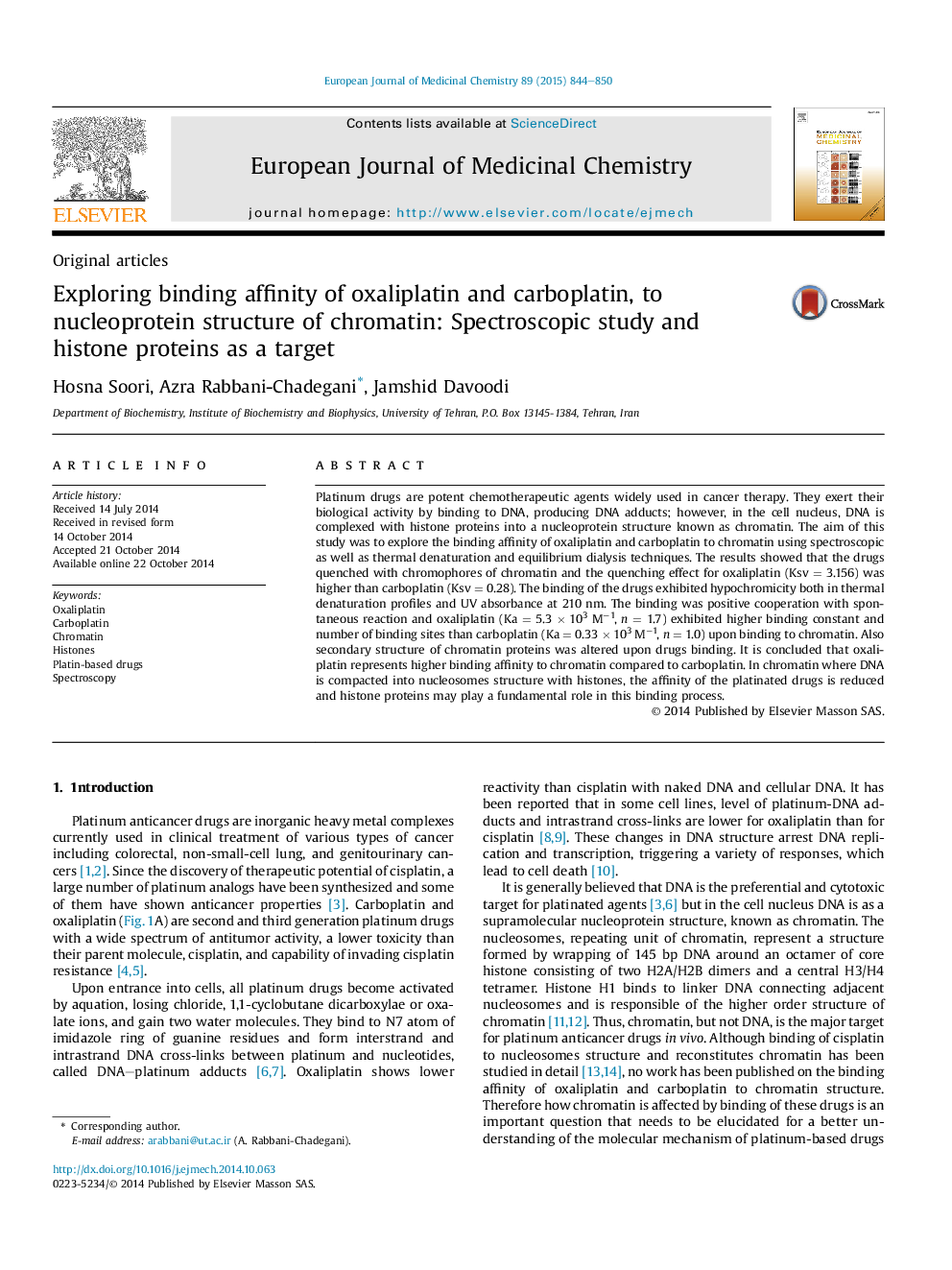| Article ID | Journal | Published Year | Pages | File Type |
|---|---|---|---|---|
| 1392279 | European Journal of Medicinal Chemistry | 2015 | 7 Pages |
•Oxaliplatin exhibits higher affinity to chromatin compare to carboplatin.•Interaction is mainly hydrophobic and the binding is positive cooperative.•Histone proteins are introduced as a target for these drugs in chromatin.•Binding of oxaliplatin alters secondary structure of histones in chromatin.
Platinum drugs are potent chemotherapeutic agents widely used in cancer therapy. They exert their biological activity by binding to DNA, producing DNA adducts; however, in the cell nucleus, DNA is complexed with histone proteins into a nucleoprotein structure known as chromatin. The aim of this study was to explore the binding affinity of oxaliplatin and carboplatin to chromatin using spectroscopic as well as thermal denaturation and equilibrium dialysis techniques. The results showed that the drugs quenched with chromophores of chromatin and the quenching effect for oxaliplatin (Ksv = 3.156) was higher than carboplatin (Ksv = 0.28). The binding of the drugs exhibited hypochromicity both in thermal denaturation profiles and UV absorbance at 210 nm. The binding was positive cooperation with spontaneous reaction and oxaliplatin (Ka = 5.3 × 103 M−1, n = 1.7) exhibited higher binding constant and number of binding sites than carboplatin (Ka = 0.33 × 103 M−1, n = 1.0) upon binding to chromatin. Also secondary structure of chromatin proteins was altered upon drugs binding. It is concluded that oxaliplatin represents higher binding affinity to chromatin compared to carboplatin. In chromatin where DNA is compacted into nucleosomes structure with histones, the affinity of the platinated drugs is reduced and histone proteins may play a fundamental role in this binding process.
Graphical abstractFigure optionsDownload full-size imageDownload as PowerPoint slide
